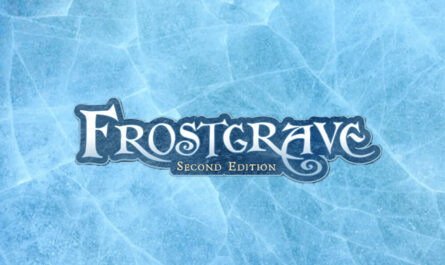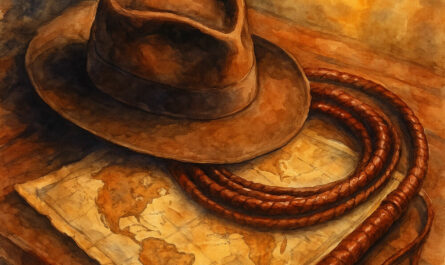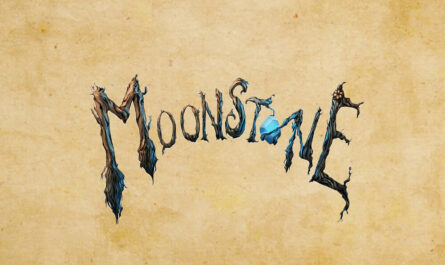You’ve always had the soul of a wizard, haven’t you? A leader of men? A pioneer of hidden knowledge? You want to command the elements as well as men, and you’re ready to take risks to do so. Perfect! Put on your warmest fleece, your mittens, and your balaclava because we’re heading straight to Felstad to see if you have what it takes to search for hidden treasures!
Frostgrave? Did you say Frostgrave?
The heat was stifling. The poorly fitting shutters of his office creaked under the blasts of burning air, and even the shadows struggled to cool the aged stones of the building. Sitting at his old writing desk, the Professor wiped a bead of sweat from his forehead before looking up at the relic shelf. There, well protected from direct light, rested some of the strangest treasures he had ever brought back from his expeditions: the sinister Crown of the Frozen King, still warm from its necromantic aura; a Fragment of the Star Key, won at the price of blood deep within the labyrinthine ruins of the forgotten city; and that damned Skull of the Great Snowy, which sometimes chuckled at night for reasons no one quite understood.
He slowly straightened up, his gaze drifting toward the drafty window. The city of ice… Frostgrave. At that moment, he would have given anything for a hint of the biting cold from the alleys of Felstad. No sooner had the name whispered in his mind than a flood of memories poured in: the heavy silence of the frozen quarters, as beautiful as they were deadly, but also the distant screams of ghouls rising from collapsed crypts, frantic chases escaping monsters or rival expeditions… So many fragments, stories, lost companions, and artifacts brought back through sweat and tears.
A sigh. He pulled his expedition journal closer, worn by time, and opened it to a blank page. His pen scratched like snow under a thief’s footsteps. It was time to record these memories before they too melted away under the crushing sun of this endless summer.
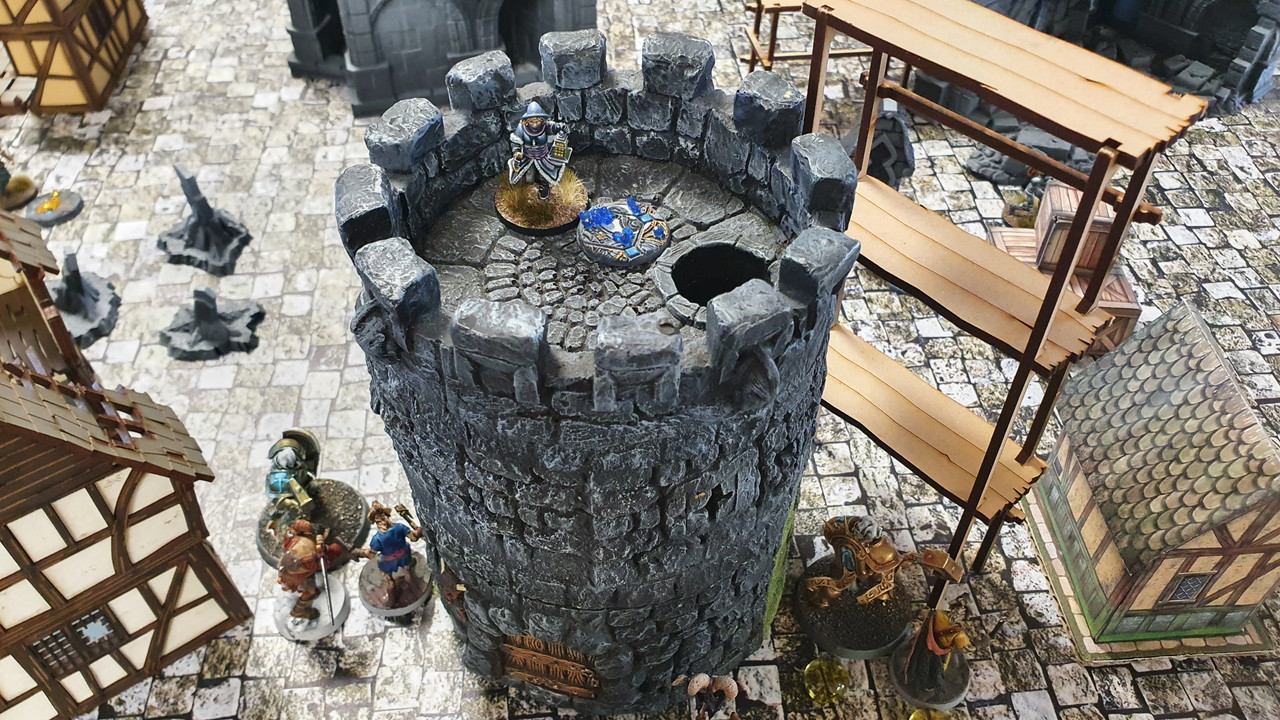
Game Overview
In the frozen ruins of Frostgrave, the ancient city of Felstad buried under ice for a thousand years, magic awakens once again. Once the heart of a thriving magical empire, the city was suddenly frozen by a cataclysmic disaster and abandoned to eternal snows. Today, the ice is slowly melting, revealing forgotten treasures, lost grimoires, and artifacts of incredible power. Drawn by these riches, daring wizards organize expeditions with apprentices, mercenaries, and sometimes summoned creatures. They venture into the city’s rubble, ready to face rivals, ancient traps, and supernatural creatures to claim (more than) their share of power.
Frostgrave is a skirmish game where you play a wizard and their expedition (a total of 10 miniatures) competing against other wizards who have had the same idea: to seize Felstad’s treasures now that the city is thawing and opening again to the world. In addition to other players’ warbands, wandering monsters can appear, and most scenarios include some creatures as well. The game can be played as standalone scenarios but, in my humble opinion, truly shines in campaign play.
The game is designed for 2 to 4 players per table, but a campaign can accommodate many more players and allow you to regularly change opponents.
It was created by Joseph A. McCullough and published by Osprey Games in 2015. It’s translated and published in French by Studio Tomahawk.
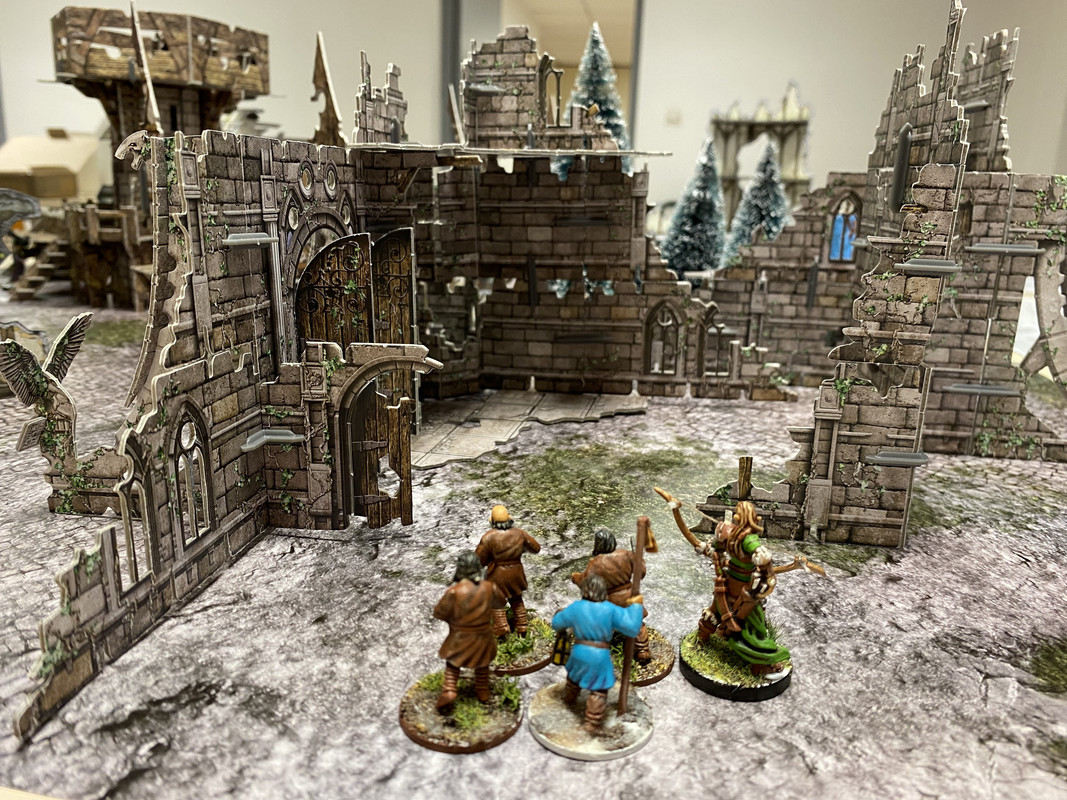
Objective of the Game
Frostgrave is a narrative miniatures game. The primary goal is to live exciting stories based on original scenarios, supported by smooth mechanics. There are no strict victory conditions but rather achievements and actions to gain experience, treasures, and precious artifacts. Gaining experience allows your wizard to improve their stats, learn new spells, and better master spells they already know. Magical items make you more powerful in future games, and gold lets you improve your base, recruit new fighters, or buy various artifacts, potions, or grimoires.
Thus, your wizard can evolve from game to game, becoming more powerful but sometimes also injured or losing expedition members. The ultimate goal of any wizard is to accumulate the most knowledge (experience) possible!
One important point: killing opponent miniatures does not bring victory nor any direct reward. Sure, it frees the way but is not a goal in itself.
One nuance: an expansion in card form called Ulterior Motives adds additional secondary objectives for each wizard, some known and others hidden, offering new rewards.
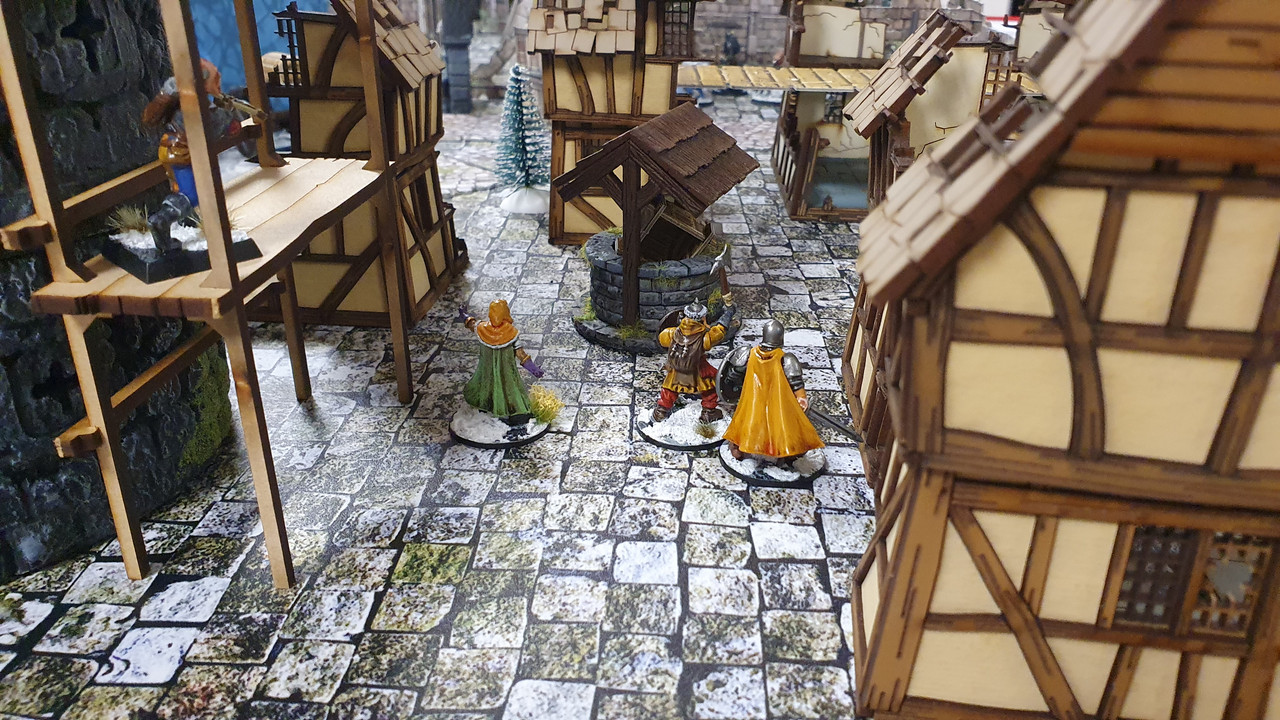
Building Your Expedition: Where It All Begins
Once the context is set and equipment listed, the core rulebook dives straight into creating your expedition.
To each lord, his due: we start with the wizard, the undisputed leader of the warband. At creation, all wizards have the same stats; what sets them apart are their spells! There are ten magic schools: from sorcery to enchantment, necromancy, illusion, and more — something for everyone. Better yet, you don’t have all the spells of your school but only three; your other five spells are chosen from other schools, more or less related. With at least eight spells per school… you can imagine the number of possibilities!
You will most likely want to recruit an apprentice, as having a second spellcaster, although costly, is a definite advantage. The apprentice is less skilled than your wizard but allows you to cast two spells instead of one per turn.
Finally, you recruit soldiers to bring your total number of figures to 10. Soldiers come in two types: standard and specialists. Specialists are limited to 4 per warband and include all ranged profiles, so you’ll have to make strategic choices right from the start! Some soldiers cost more than others. A Templar or elite sharpshooter costs 125 gold pieces, while a war dog costs only 10… Bandits and thieves are even free, so even if things go badly, you’ll still have a 10-figure expedition!
Game expansions bring more options and variety, including exotic profiles and the possibility of having a captain — a soldier who can level up during the campaign, a strong right-hand for the wizard with unique abilities influencing the game like spells.
.jpg)
The Game System
Game Turn
Frostgrave is played over multiple turns (until no treasures remain on the table or only one expedition has figures left), each divided into phases. Each turn begins with the wizard phase, where each wizard activates and may bring along 3 soldiers close enough. Then the apprentice phase, where each apprentice activates (along with 3 nearby soldiers). The third phase is for soldiers, where all figures that haven’t acted with a spellcaster activate. Finally, the creature phase: all non-player-controlled figures (that survived previous phases) act based on an action matrix depending on conditions — do they see anyone? Who is closest? It’s simple and works well; once you get the logic, it becomes intuitive.
Ok, but how do you activate ?
Very simply! Each figure has two actions per activation. If it takes two, one must be movement (or reloading a weapon, with some exceptions). The second can be anything: another move, an attack, casting a spell, interacting with the scenario, picking up treasure…
.jpg)
What about the dice?
Frostgrave uses a d20 system (a 20-sided die, rolling from 1 to 20). The roll is often modified by a stat bonus (or penalty). Some rolls must meet a threshold (as with spells). Others are opposed rolls, where multiple players roll and compare totals; the highest wins!
This system is very epic, both in successes and failures. With 20 possible results, variance is high. Bonuses range around +2, sometimes up to +8 or +10 on rare occasions. It can be frustrating during a bad streak, so keep in mind:
- It will turn in your favor eventually.
- Above all, it’s about telling a great story, not tournament play!
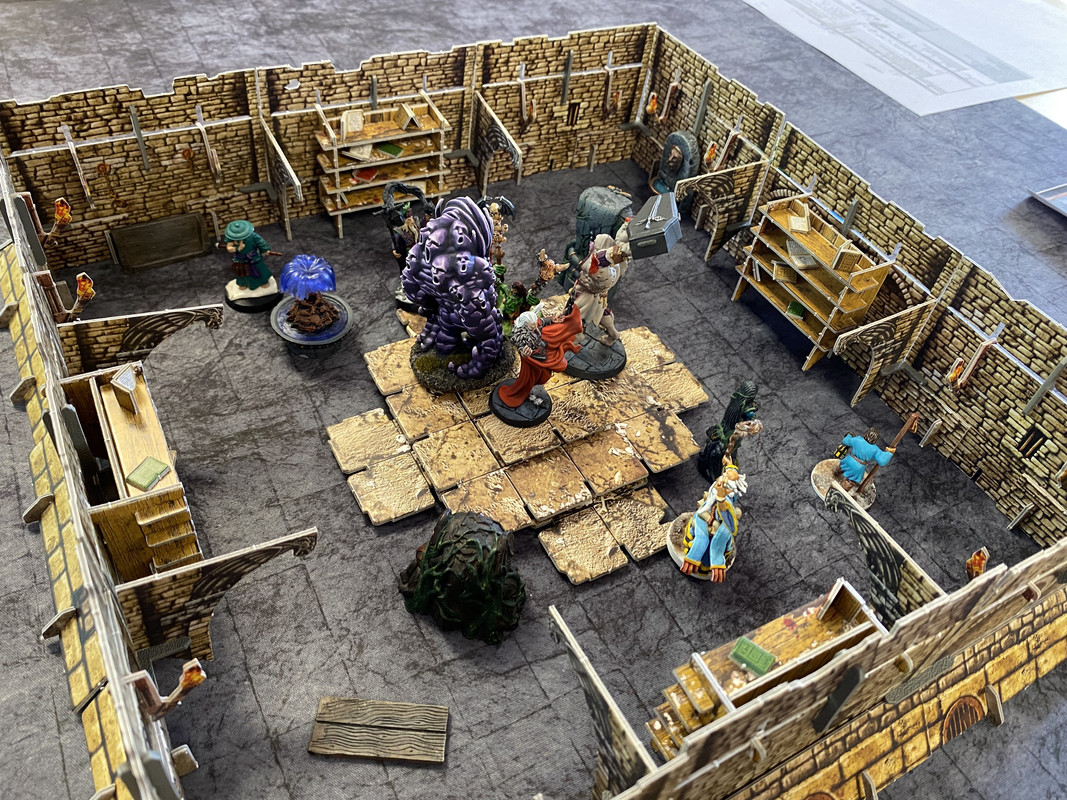
The Combat System
Combat follows directly from what I explained earlier. It’s an opposed d20 roll, adding combat (or ranged) stats and modifiers for numbers, cover, movement, etc. The higher total wins and inflicts damage. Here’s where the magic happens (pun intended): no extra roll! You take the winner’s total, subtract the defender’s armor (base 10 for humans, possibly boosted by armor, magic items, spells…), and the remainder is deducted from the victim’s hit points.
Note that in multi-combat (e.g., two figures from player A vs. two from player B), melee fights are resolved 1-on-1 to avoid support effects.
Also, you cannot break melee by moving away. To disengage, you must win a weapon pass to push back the opponent…
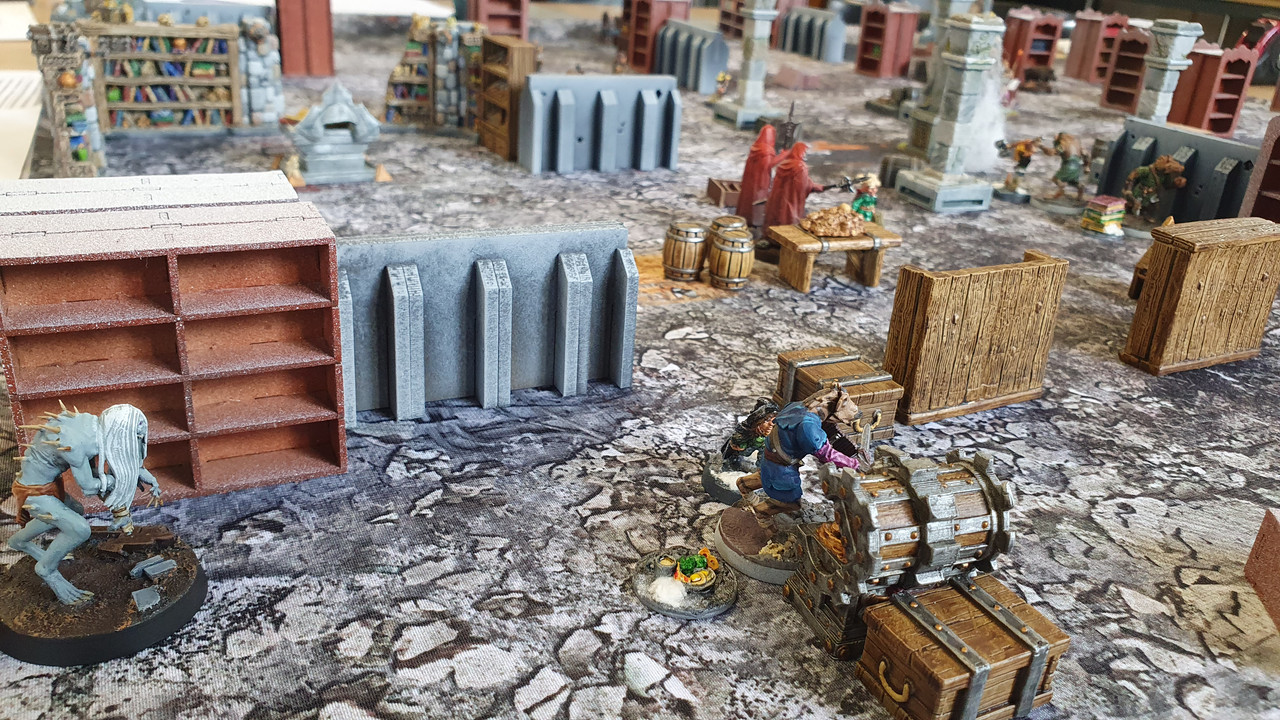
Adventures
As I mentioned earlier, while you can just grab treasures on the table, the game proposes playing each match with a scenario. The core book includes 19! Expansions add many more, some designed to be linked into campaigns.
A scenario provides a setup, which can be basic rules or include specific terrain, unique objectives, or monsters. It brings special rules for those elements and explains what earns experience and what treasures you might gain.
Besides official scenarios, many community-made ones exist!
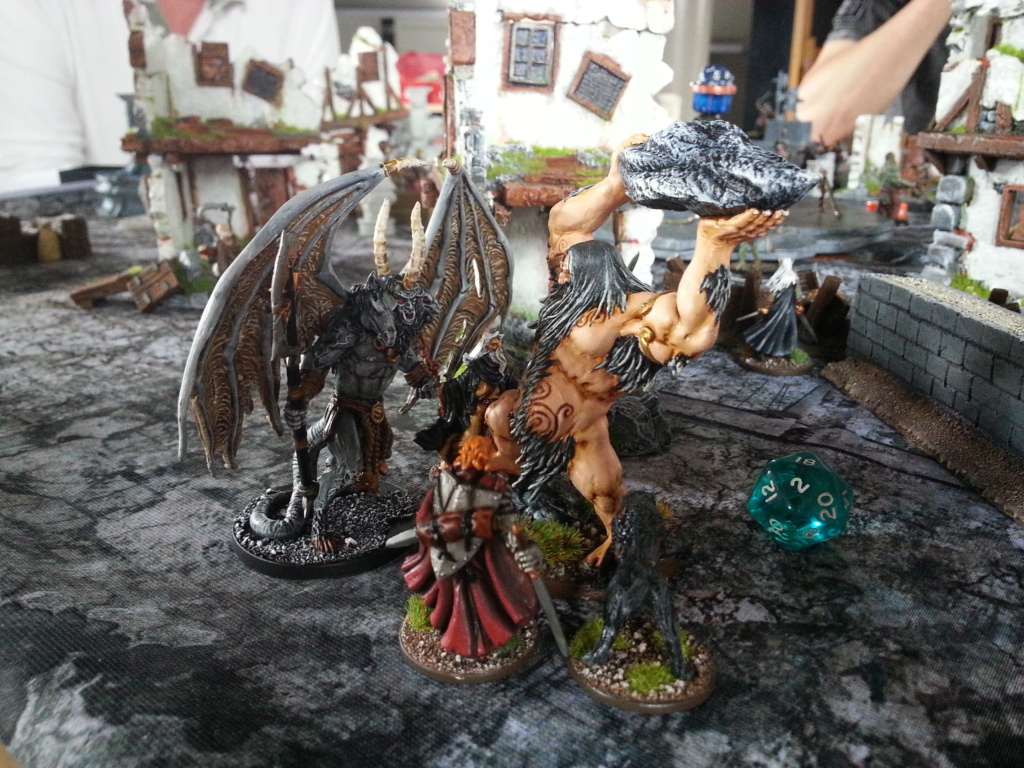
Campaigns
As noted before, I find the game much more fun in campaigns. Several types exist; I’ll dedicate a future article just to that. In short: you can keep the same wizard from game to game, accumulating knowledge and wealth through unconnected scenarios, or follow a series of scenarios with a coherent narrative and consequences.
The idea of a campaign is not only to keep the same wizard and expedition but to see them evolve! Spend your experience to get stronger, use your hard-earned gold to recruit new soldiers (bring on the barbarian!!! or you might buy that summoning circle that would finally break your streak of failed spells. You could also choose to use that terrifying magical item you found at the end of the last scenario to make your opponents suffer — ahem, I mean, to study it practically for the sake of magical science.
It’s also the moment to check on your miniatures who were taken out of action: are they injured, will there be consequences, or will they be back in top shape for the next game? Do you really play the same way when you know that expensive knight might not make it back if things go badly?
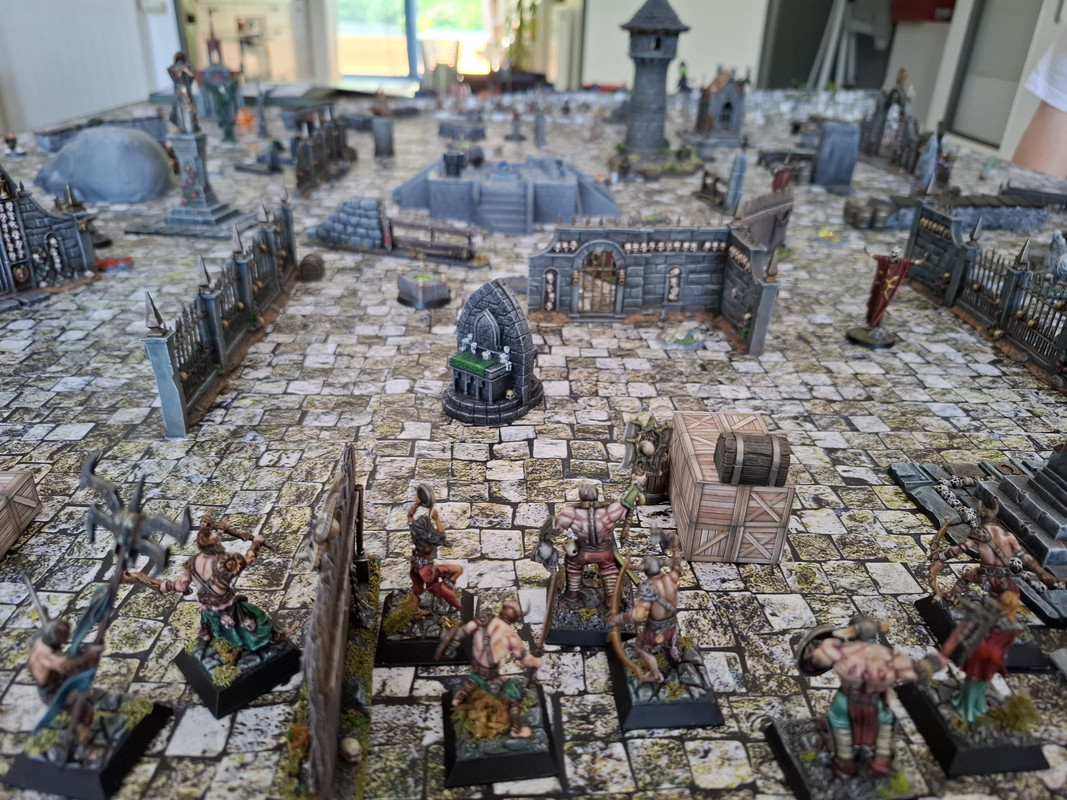
What makes this game stand out from others?
You play as a wizard, you pick your spell combo… and then you pray it works! Frostgrave offers endless ways to plan and dream big — and just as many ways for it to all go wrong. Maybe an enemy player will ruin your plan, maybe the dice will betray you, or maybe a random monster will show up out of nowhere.
But is it a big deal? Not really. Losing a miniature doesn’t ruin the game — it just forces you to adapt and rethink your priorities. The story unfolds in front of you, and the fun lies in the surprise, the chaos, and that glorious moment when you finally drag that damn treasure chest off the board even though it weighs a ton!
Don’t think for a second that there’s no control, though — your decisions matter. Spell management is crucial, and sending your knight with two warhounds to fight that wild troll will obviously work better than sending your lone little thief with a stick and a butter knife.
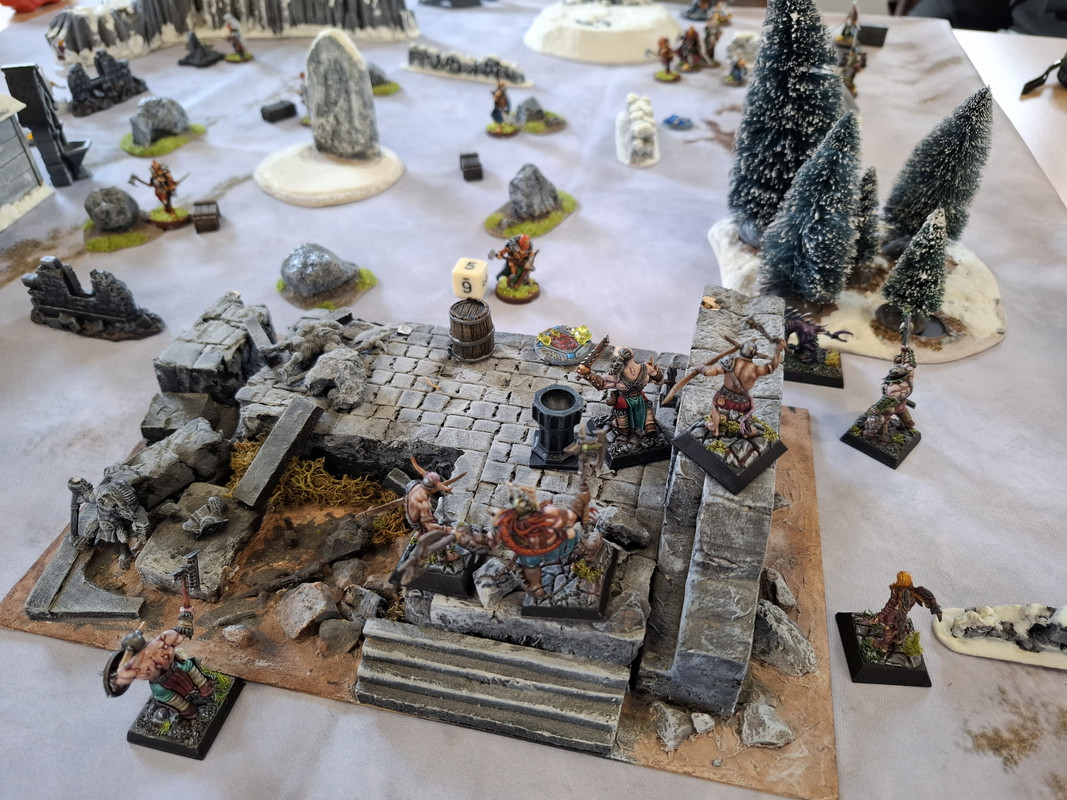
Tabletop : full of ruins
Frostgrave is openly set in a snowy, ruined city. You’ll be battling among ancient stones, collapsed buildings, and snow up to your elbows. Strangely though, the weather conditions have no in-game effects. The ruined setting and dense terrain matter much more than the snow itself. Personally, I went with more generic earth-toned scenery and bases so I could reuse them in other games.
The size of the play area depends on the number of players. Stick to a small table for 2 players, and scale up to a max of 120 × 120 cm (about 4′ × 4′) for 4-player games.
Because dice rolls can be dramatic… it’s highly recommended to pack your table with terrain. This helps break line of sight (ideally no more than 20 cm / 8″) and gives your miniatures plenty of cover.
It’s also great to include elevation — upper floors, bridges, balconies… anything that adds verticality makes the game more tactical, dynamic, and just plain beautiful.
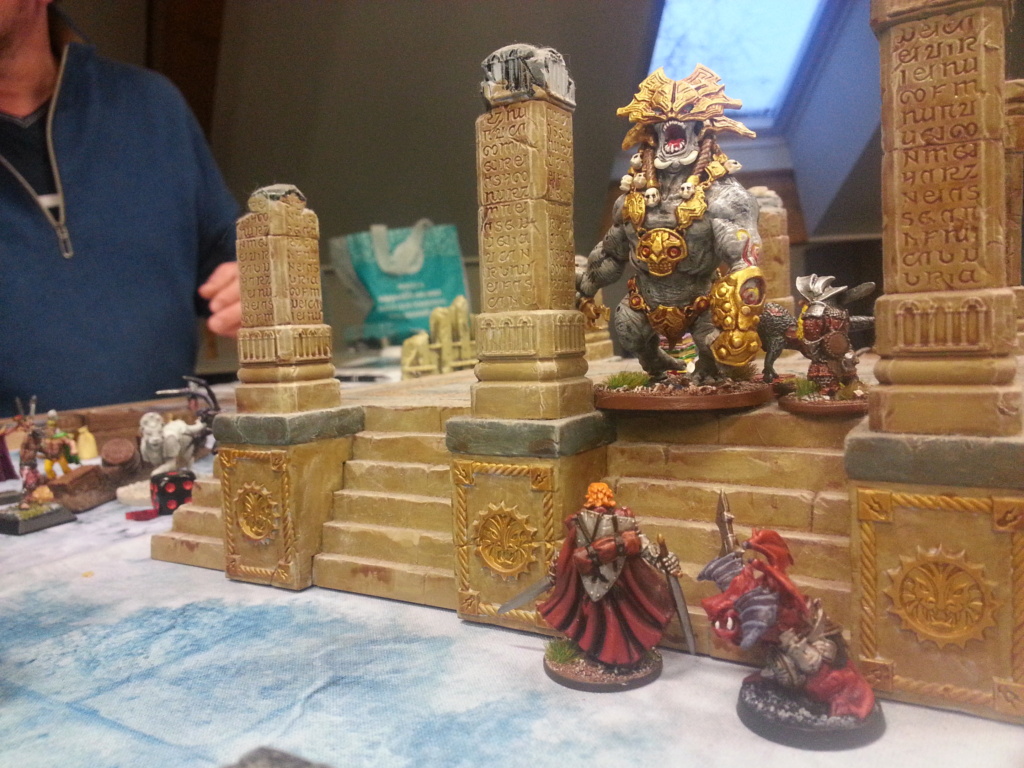
Who is this game for?
Pardon my bluntness, but let’s be clear: this game is not for sore losers or people who hate randomness. We use a d20 — yes, that means the one-legged, half-blind sewer rat can knock out your elite warrior in a single hit if the dice feel spicy that day. Frostgrave is full of epic moments — but epic doesn’t always mean success. Sometimes it’s a total disaster, depending on whose perspective you’re looking from.
The player who rolls a natural 20 to snipe the enemy wizard with a lucky arrow will probably be thrilled. The wizard’s owner? Maybe not so much. The trick is not to dwell on individual events, but to enjoy them as cinematic moments and trust that the luck will eventually swing back your way.
That said, you can stack the odds in your favor with support troops, buff spells, potions, and careful positioning. You reduce the randomness — but nothing is ever guaranteed. So I don’t recommend Frostgrave for people who demand perfect control or hate it when plans suddenly go off the rails.
Now, one point you might see as a negative — or a positive:
Negative: Frostgrave needs lots of terrain and a variety of miniatures.
Positive: Frostgrave needs lots of terrain and a variety of miniatures.
It depends how you see it. Yes, you’ll need to prep lots of minis and small terrain pieces — some of which might rarely see use. On the other hand, it’s a fantastic excuse to collect and paint cool, unusual models, and enjoy a game that offers tons of variety and themed content to keep things fresh.
To be clear: the creator isn’t strict about using the official miniatures. You’re encouraged to substitute or proxy missing models — the game never blocks you for not owning the exact figures.
So what are the real pros? Why might this game be for you?
The game is simple but rich, especially for campaign play:
- Lots of expansions offer ready-made campaigns (from 3 to 12 scenarios — some are even co-op!)
- Experience, treasure, and base management allow your warband to evolve without needing constant rules checks
- Flexible format: 2 to 4 players per table, changing every session if needed
- Simple but not simplistic rules
You’ll quickly learn the core mechanics: turn structure and activations are intuitive.
Spellcasting is easy once your warband sheet is prepped.
Combat is always 1-on-1 opposed rolls — just compare the totals.
In-game effects are as varied as they are fun.
Of course, the spell list is loaded with wild effects — from conjuring bridges to summoning demons, mixing potions, or casting invisibility. If players pick different spell schools, it gets even more magical!
Scenarios, monsters, and treasure all add variety and excitement.
Expansions focus on different aspects too: advanced demon summoning, dungeon delving, turning into a lich, weird mutations…
In short: I recommend this game to anyone who wants to jump in fast (a 4-player session still takes time, of course), tell fun stories, and create unforgettable scenes!
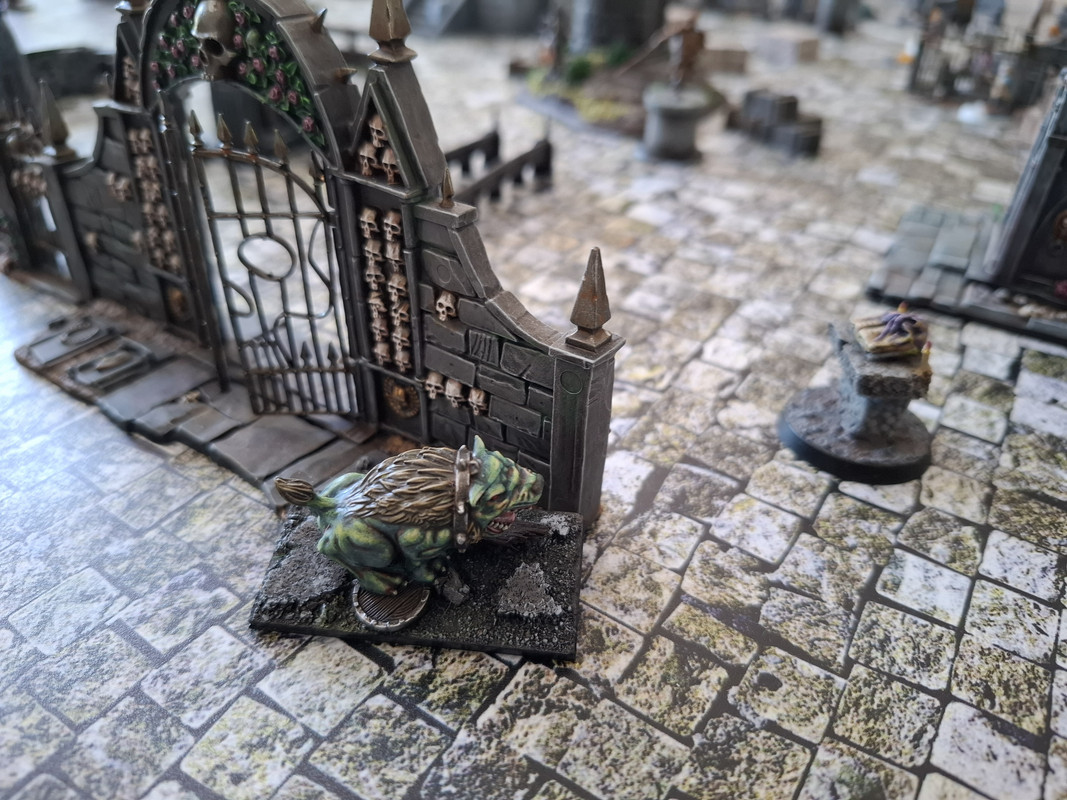
Final word
Fun!
Okay, let’s expand a bit. Frostgrave is a fantastic group game. It’s deeply supported by tons of expansions and offers incredibly rich, varied content. It’s easy to learn and a ton of fun — but it can be frustrating if you take those dice rolls too seriously.
It’s also a great excuse to dig out all your fantasy minis collecting dust, or paint new ones tailored to the game’s magical creatures and themes.
While there’s a free solo module and a cooperative campaign available, the core game is definitely competitive: a magical rivalry. Sure, there’s no mechanical reason to attack other players directly — but at some point, they’ll get in your way and you’ll be tempted to sabotage them anyway.
Expect nothing. Be ready for anything.
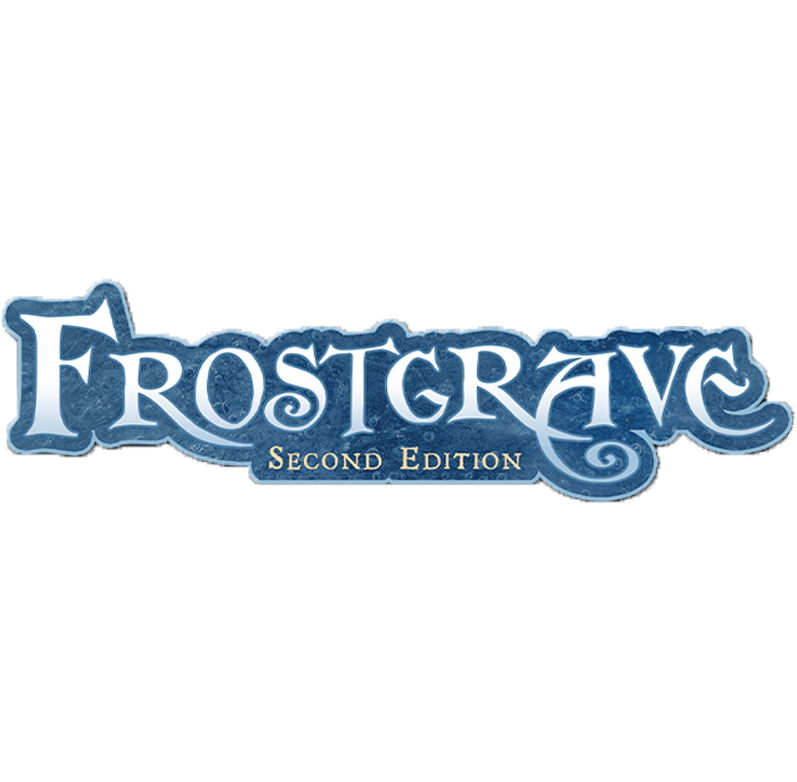
Find Frostgrave players
Join your country’s Frostgrave Discord community and find players near you.

